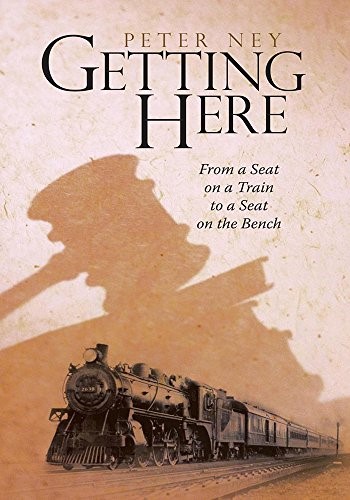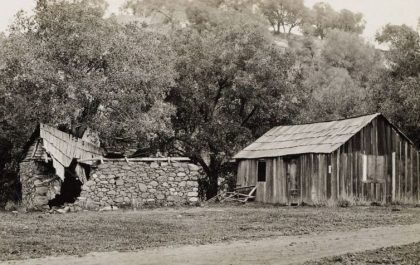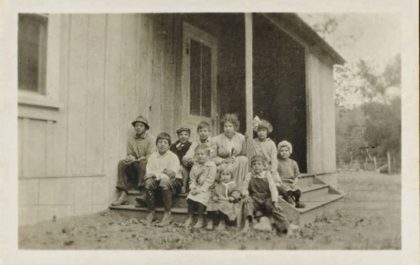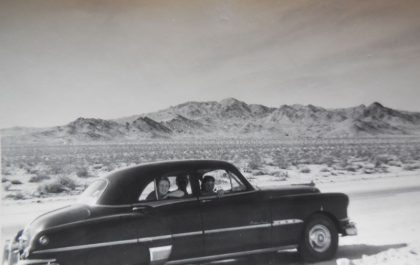
I met Judge Peter Ney late in his life; shortly after he had completed his autobiography: Getting Here: From a Seat on a Train to a Seat on the Bench.
Peter’s son Rick and I have been friends for two decades and my wife and I were invited each year to join his family for Thanksgiving. The highlight of these gatherings was not the spread of fine food and easy flowing drink. It was chatting up Judge Peter. After his recent passing, I decided to spend some time reflecting on his amazing life.
The titular “seat on a train” marks a dramatic moment in world history in which a seven year-old boy appeared as an unlikely candidate to eventually occupy a “seat on the bench” of the Colorado Court of Appeals.
Peter was one of 10,000 mostly Jewish children who fled Germany in the 1930s following Kristallnacht – the night of broken glass – the opening crescendo to the Holocaust. Unlike the vast majority of these children, Ney was reunited with his family in England and then sailed to America.
In this delightfully personal and often-humorous account, Ney embarks on a truly American odyssey, reinventing himself time and again. Through it all, Peter succeeds, not so much through any particular talent, but due to a collection of personal traits; a keen sense of curiosity, an innate desire to lead a meaningful life, an independence streak a mile-long, an often self-deprecating sense of humor, and an ever-present humility that belies his many notable and varied accomplishments.
Add in a healthy dose of eternal gratitude for his adopted country and Peter Ney’s life embodies the American Dream.
To the chagrin of his more practical-minded father, Peter’s early interest in comic books and drawing led him to the Philadelphia Museum School of Art. Before graduating, he was offered a job designing home entertainment products for the Philco Corporation; cabinet radios, clock radios and the like. A photograph of these ubiquitous devices suggests that, if you were alive in the 1950s and 60s, you almost certainly came across a product influenced by Peter Ney’s hand.
It was during this first success story that he met and married Betty. She is a constant, loving, and guiding force throughout his life.
Peter’s time at Philco was interrupted by the U.S. Army. While welcoming the opportunity to serve the country that had taken his family in, Ney quickly discovered that the honor was tempered by the banality of army life. Tellingly, many of his superiors had the same last name; Sergeant A**hole, Lieutenant A**hole… Hawkeye Pierce of M*A*S*H fame comes to mind.
Following the Russian launch of Sputnik in 1957, Peter decided he wanted to engage in more meaningful work. The trick was promoting his Bachelor of Fine Arts degree as the perfect fit for working in the burgeoning American space program.
After taking a position with the Glenn L. Martin Company, he moved to Denver, Colorado where he worked as a “human engineer” on the Titan II missile system. As a self-proclaimed expert on the “man-machine interface” Peter was involved in designing consoles and training devices to be used by Air Force officers who might someday launch these nuclear-armed weapons. Job satisfaction improved as the missiles were being considered for launching men into space.
A chance encounter taught Peter that his art degree made him eligible for law school. He worked full-time at Martin while attending classes at night. At the age of 35 he was sworn in and made the bold decision to go into practice on his own. This, after abandoning two very successful positions that were lifetime careers for others.
With the Law Office shingle properly deployed Peter found himself defending the constitutional rights of a broad array of 1960s characters; anti-Vietnam War protestors, prostitutes harassed by the police, lesbians arrested for holding hands, accused murderers, adult bookstore owners, an erotic film distributor, massage parlors, drug users, and more.
He also represented a “Jewish cattle rustler.” (Read the book.)
In one case, Peter traveled to Peru to rescue a client from overzealous drug charges. The famous trial attorney adapted his skill set to a foreign land; in this case it meant effectively bribing the right officials.
Amazingly, he also represented a group of Nazis and their right to free speech and assembly. Denver Magazine named him Colorado’s leading constitutional law attorney.
Peter also represented the Smaldone family during fifteen of his twenty-two years as an attorney. The Smaldones and their “associates” were regularly charged with gambling, loan-sharking, witness tampering, drug charges, and more. Unlike the typical mob movie, Peter did absolutely nothing illegal while working for this organized crime family. Indeed, on at least two occasions investigators tried to lure him into misbehaving. They failed.
The entire Ney family developed personal relationships with many of his colorful clients. While driving a prostitute to her trial, Peter’s wife Betty and their thirteen year-old daughter Linda were in the back seat. The appropriately-named Roxanne turned around and said, “Well, Linda, what do you want to do when you grow up?”
Roxanne had been charged with refusing to submit to a vaginal and rectal exam as ordered by the police. Ostensibly meant to curb the spread of disease among prostitutes and their clients, the case more properly epitomized an era when civil rights abuses were the common-place tools of law enforcement. Attorney Peter Ney worked tirelessly on behalf of those victimized by these abuses—earning quite a flamboyant reputation along the way.
On April 20, 1988, Peter Ney was sworn in as a judge on the Colorado Court of Appeals. His time on the bench is broadly viewed as an ethical model of judicial prudence and a testament to protecting the liberties of all citizens.*
For me, Getting Here stands as a heartwarming embrace of American possibility while re-reading it with intention sadly reminds me that my Thanksgivings will never be the same. RIP Judge Peter.
*This article about Judge Peter Ney appears in the January 2021 issue of the Denver Law Review. https://digitalcommons.du.edu/cgi/viewcontent.cgi?article=2263&context=dlr




